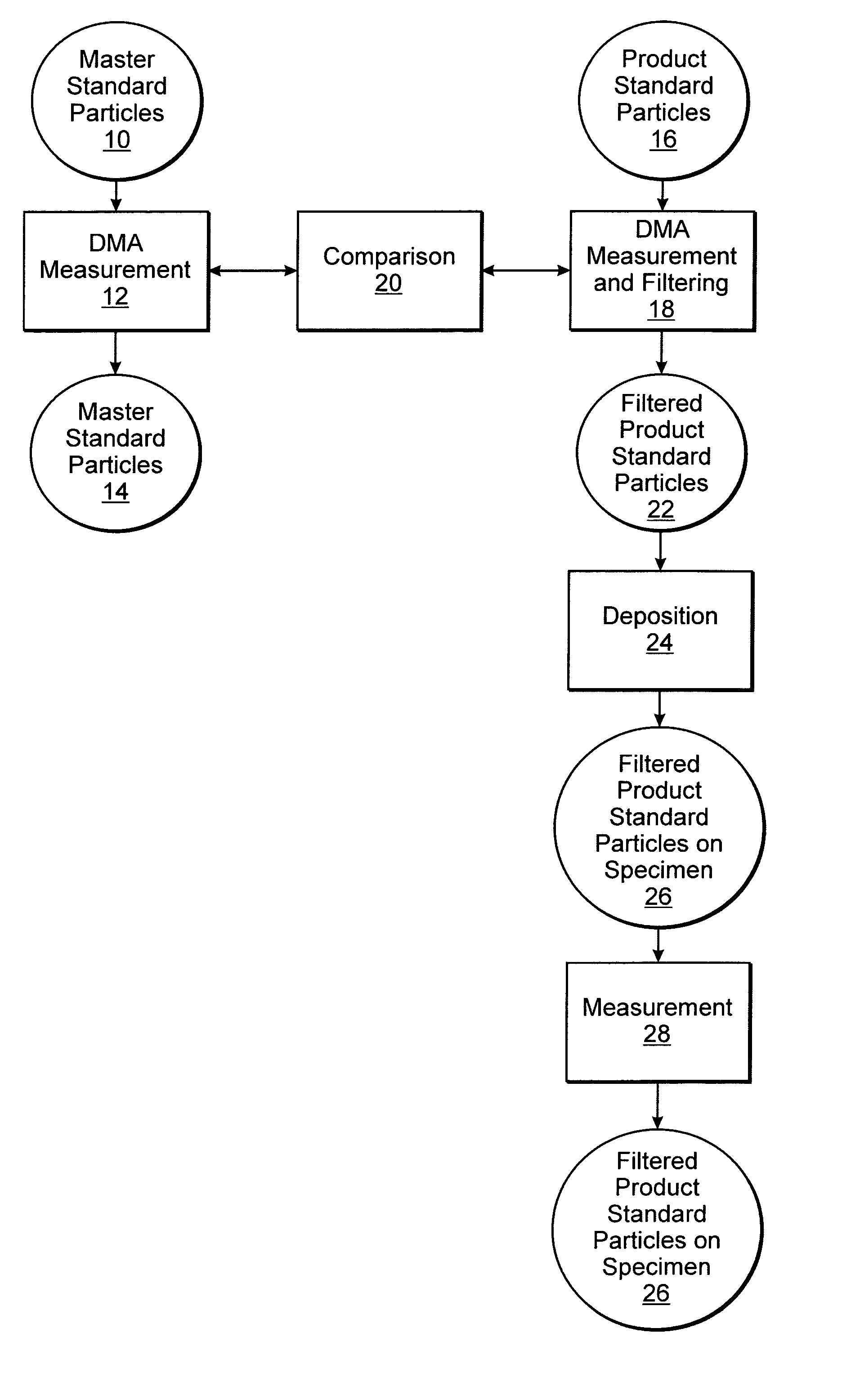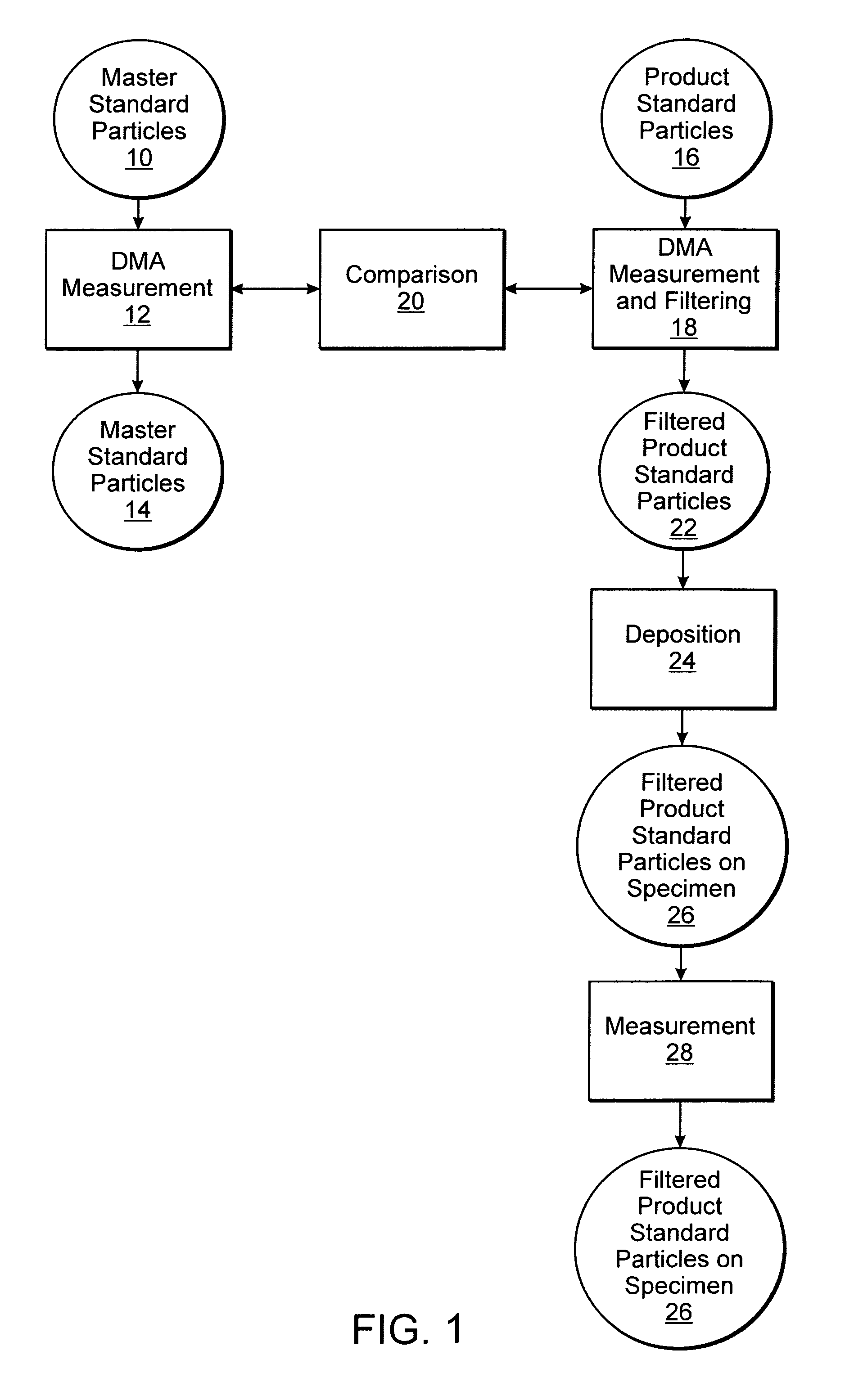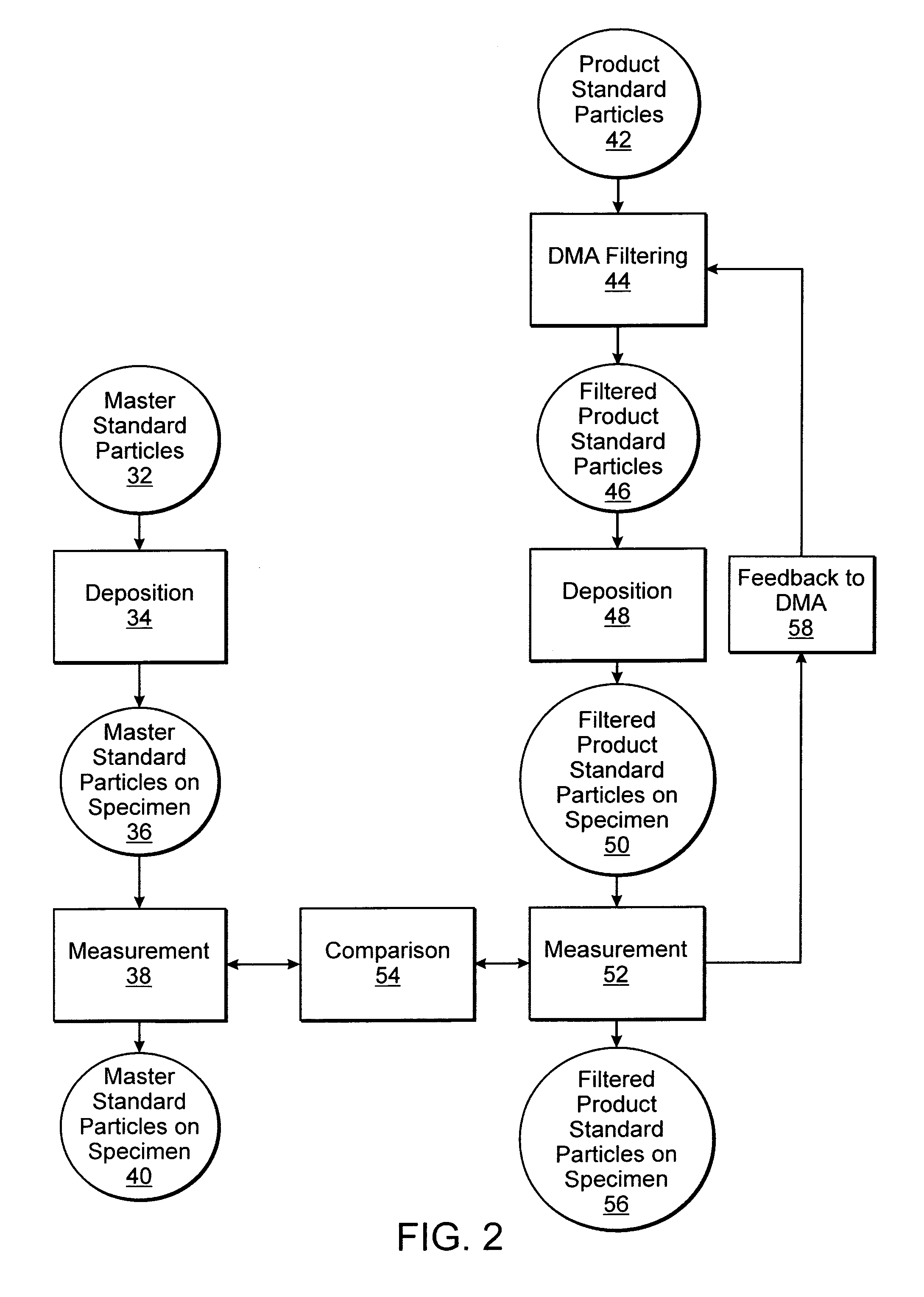Methods for forming a calibration standard and calibration standards for inspection systems
a technology of inspection system and calibration standard, which is applied in the direction of optical radiation measurement, instruments, photometry, etc., can solve the problems of large part of the yield loss of very large scale integrated circuit, large change in the size of the psl sphere, and large change in scattered light, so as to reduce the size accuracy of the deposition system used to deposit particles, eliminate uncertainty, and reduce the effect of the size accuracy
- Summary
- Abstract
- Description
- Claims
- Application Information
AI Technical Summary
Benefits of technology
Problems solved by technology
Method used
Image
Examples
example
Sizing Accuracy
[0051]FIG. 4 is a plot of measured PSL sphere size versus wafer illustrating the sizing accuracy of an embodiment of a method for forming a calibration standard for an inspection system. The method that was used to generate the data in FIG. 4 is included here for example purposes only. The method illustrated in FIG. 2 may or may not include the following steps. A SurfScan SP1 DLS was selected to be calibrated and used for the entire process of forming the calibration standards (i.e., pre-scans, mid-scans, and post-scans). If the process is interrupted by other work or by an interval of time of more than one day, the calibration may or may not be repeated. To calibrate the SurfScan SP1 DLS, calibration wafers made with full wafer, direct (without DMA filtering) depositions of 60 nm and 83 nm PSL spheres were placed in a cassette. The two calibration wafers were scanned with oblique illumination, and scattered light was collected with a dark field, wide scatter angle ch...
PUM
 Login to View More
Login to View More Abstract
Description
Claims
Application Information
 Login to View More
Login to View More - R&D
- Intellectual Property
- Life Sciences
- Materials
- Tech Scout
- Unparalleled Data Quality
- Higher Quality Content
- 60% Fewer Hallucinations
Browse by: Latest US Patents, China's latest patents, Technical Efficacy Thesaurus, Application Domain, Technology Topic, Popular Technical Reports.
© 2025 PatSnap. All rights reserved.Legal|Privacy policy|Modern Slavery Act Transparency Statement|Sitemap|About US| Contact US: help@patsnap.com



